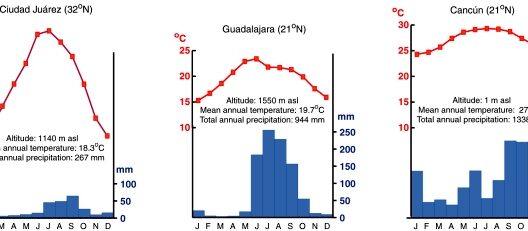The ancient region of Mesopotamia, often referred to as the cradle of civilization, was shaped by its unique climate, which played a pivotal role in the development of one of the earliest known human societies. But what does it mean for a civilization to be nurtured by its environment? To fully grasp the essence of Mesopotamia’s climate, we must delve into its geographical attributes, seasonal variations, and the intricate relationship between weather patterns and the flourishing of human settlements.
Situated between the Tigris and Euphrates rivers, modern-day Iraq, southeastern Turkey, and parts of Syria composed Mesopotamia. This land, characterized by fertile plains, was ideally positioned to harness the brimming waters of its rivers, which were fundamental to the agricultural practices that sustained early hominins. The climate, primarily arid to semi-arid, meant that rain was sporadic and insufficient for farming. Thus, the residents became proficient in irrigation management, diverting river water to cultivate crops.
During the hot summer months, temperatures could reach sweltering heights, often surpassing 40 degrees Celsius (104 degrees Fahrenheit). Such extremes posed significant challenges for agriculture and daily life. The question arises: how did these early civilizations adapt to such inhospitable conditions? The ingenuity of the Sumerians, Akkadians, and Babylonians in harnessing water resources was remarkable. They developed complex irrigation systems, including canals and reservoirs that enabled them to import life-sustaining water to their arid fields.
The winter months, conversely, introduced a stark contrast with cooler temperatures, frequently dropping to around 10 degrees Celsius (50 degrees Fahrenheit). This variation presented both opportunities and challenges. The relatively mild winters allowed for the cultivation of a variety of crops, including barley and wheat, which were staples in the Mesopotamian diet. However, unforeseen seasonal floods could devastate crops, leading to famine and social unrest. Communities would often have to deal with the repercussions of their climatic challenges together, forging stronger social bonds as a result.
The Mesopotamian climate wasn’t solely a tale of extremes; it also fostered a diverse ecosystem. The banks of the Tigris and Euphrates were alive with flora and fauna, supporting various wildlife, including fish and migratory birds. This biodiversity provided both sustenance and spiritual significance for the inhabitants. The interplay of climate and ecology became an integral aspect of their cultural fabric, informing their mythology, agricultural practices, and even daily rituals.
A significant aspect worthy of attention is the ‘climate challenge’ faced by the Mesopotamians. While the fertile grounds promised prosperity, the inherent unpredictability of the weather often led to significant dilemmas. What strategies did they deploy to mitigate the risks associated with drought or flooding? Historical records reveal a range of adaptive techniques—crop rotation, the selection of drought-resistant varieties, and even community-led initiatives that ensured equitable distribution of resources during scarcities.
As agriculture burgeoned, so did the complexities of society. The climate infused the very fabric of Mesopotamian life—it dictated labor patterns, influenced social hierarchies, and shaped economic systems. With harvests that could be rich or meager, the disparity between socioeconomic classes became pronounced, giving rise to a structured hierarchy. Those who controlled irrigation systems often wielded unprecedented power, effectively stratifying society based on agricultural production.
The religious and cultural dimensions of Mesopotamia were also deeply intertwined with their climatic conditions. Deities such as Enki, the god of water, became central figures in their belief system, symbolizing the lifeblood necessary for agriculture. Festivals were closely linked to seasonal changes, celebrating both the bounty of the harvests and seeking blessings against natural calamities. The culture of this ancient civilization emerged from a climate that was as nurturing as it was capricious, making the agricultural cycle sacred in their societal ethos.
Exploring the ramifications of climate on Mesopotamia invites reflection on contemporary issues facing our planet. In an age of climate change, the inherent unpredictability of weather patterns eerily echoes the challenges faced by ancient civilizations. How can current societies learn from historical precedents to tackle similar climatic hurdles? Today, irrigation technology, climate modeling, and resource management, although advanced, still reflect the ingenuity inspired by civilizations such as those in Mesopotamia.
Today, we find ourselves at a crossroads reminiscent of our ancestors—tasked with ensuring food security in an uncertain climate. Building resilient agricultural practices and fostering community solidarity stand crucial for navigating environmental challenges. Just as the dwellers of ancient Mesopotamia learned to adapt, we too must cultivate adaptability and awareness in addressing climate-related concerns, lest we repeat the cycle of boom and bust that defined their settlements.
In conclusion, the climate of Mesopotamia was not merely a backdrop for human activity; it served as a catalyst for innovation and adaptation. This rich historical tapestry highlights the intricate bonds between weather, society, and culture. As we ponder these connections, we are reminded of our ongoing relationship with the environment and the imperative to learn from our past to build a sustainable future.





